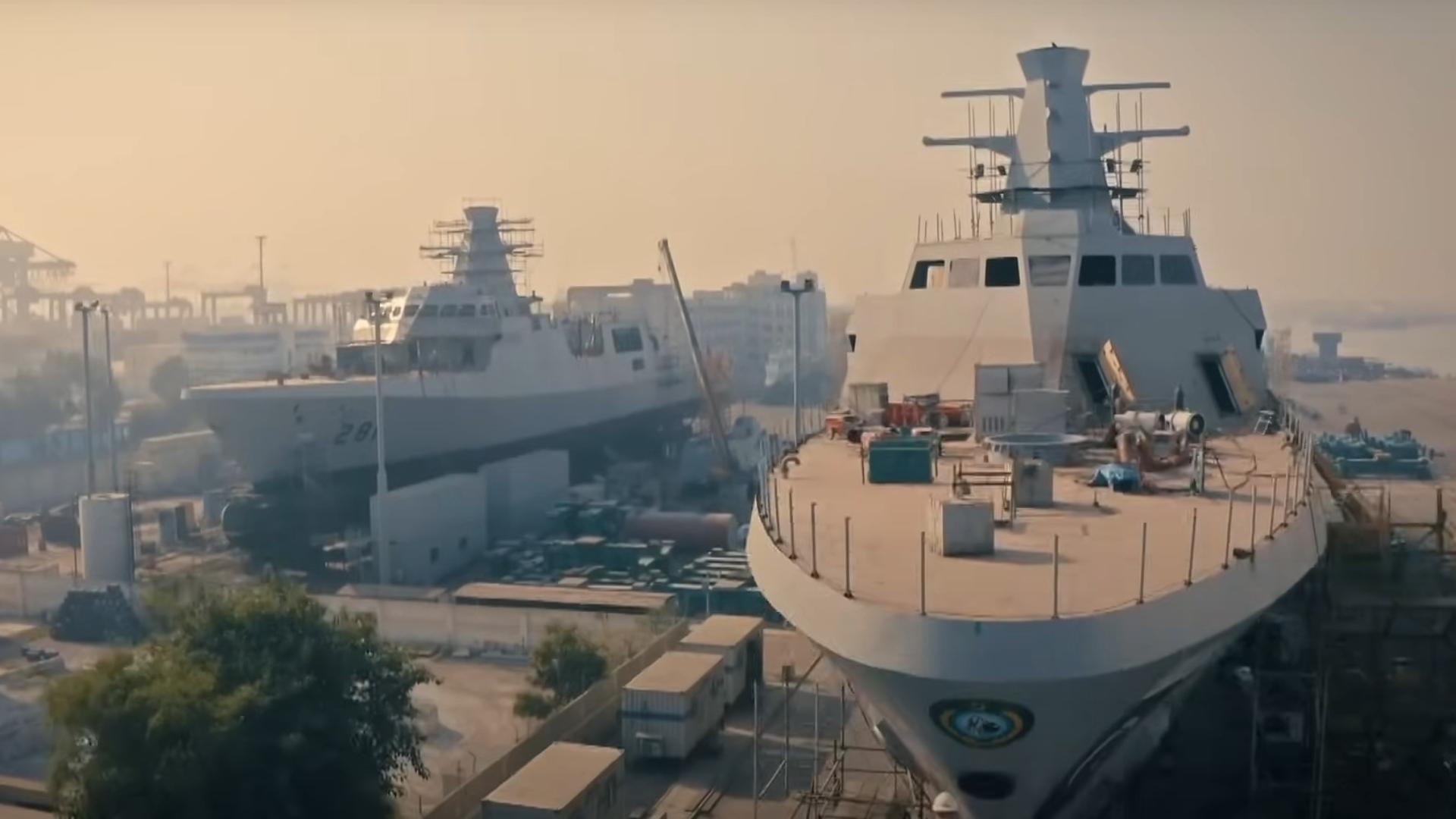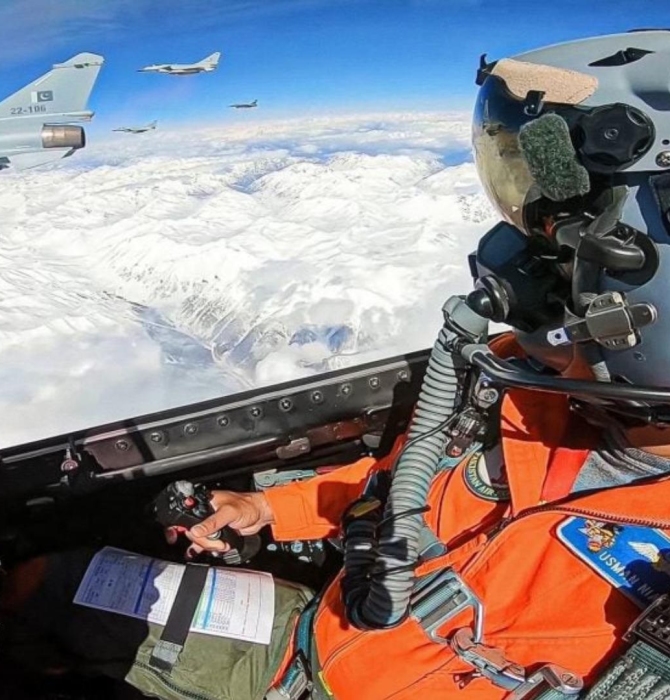2793Views

Defence Uncut | The Pakistan Navy is a Silent Success Story With Big Ambitions
In a new episode of Defence Uncut, we delve into a series of significant regional and domestic developments, including the Israel-Iran Conflict, Pakistan’s 20% defence budget increase, and a potential deal between Indonesia and Turkey for 40 KAAN fighters.
Pakistan’s Defence Budget Gets a Boost
Pakistan is set to increase its defence budget by nearly 20%, allocating roughly $9 billion USD for the upcoming fiscal year.
This outlay includes approximately $2.3 billion for procurement, a figure that understates total purchasing power as it mainly covers the upfront “flyaway” cost of new hardware, with long-term support costs absorbed by the separate operating budget.
Notably, a significant budget cut to the national space agency, SUPARCO, suggests that future military satellite procurements will be routed through other defence entities.
Indonesia Commits to 48 KAAN Fighters?
In defence industry news, Turkey and Indonesia signed a landmark Memorandum of Understanding (MoU) for 48 fifth-generation KAAN fighters. Valued at an estimated $10 billion, the deal is a major step in establishing economies of scale for the Turkish program.
However, one should view it with caution, given Indonesia’s history of shifting between suppliers and the fact that the KAAN is still in early development. For other potential partners, the detailed MoU serves as a clear signal to formalize commitments soon to secure favorable terms on the next-generation platform.
The Pakistan Navy: A Silent Success Story
For decades, the Pakistan Navy was arguably the most neglected branch of the country’s armed forces.
Historically, a disproportionate focus on land and air threats left the nation’s maritime security under-resourced, even when geopolitical realities, such as a bifurcated state with East Pakistan, demanded a robust naval presence.
This paradigm began to shift significantly after 1971.
The Navy’s leadership understood that its primary wartime contribution would be to establish and maintain a credible anti-access and area-denial (A2/AD) posture.
The goal was not to challenge the Indian Navy in a blue-water contest but to develop sufficient capability to deny enemy access to Pakistan’s coastal and littoral waters, thereby protecting vital sea lanes of communication (SLOCs).
This revised doctrinal clarity set the stage for a decades-long, gradual buildup.
Foundational elements were put in place through the 1990s and 2000s, most notably with the Agosta-90B submarine program, which included a significant transfer of technology from France.
However, it was after 2015 that these foundational efforts were truly activated, unleashing a comprehensive and multi-dimensional modernization drive that is now coming to fruition.
A Three-Dimensional Modernization
The Pakistan Navy is currently in the midst of its most significant expansion in history, moving from a small force of aging, second-hand vessels to a modern, well-equipped fleet with a growing indigenous backbone.
The Surface Fleet
The surface fleet is undergoing a complete renewal. Through the 1990s and 2000s, the PN operated about eight aging ex-Royal Navy frigates. By the end of this decade, it is on track to field a fleet of up to 20 large, modern surface combatants.
This includes four state-of-the-art Type 054A/P (Tughril-class) frigates from China and four MILGEM (Babur-class) corvettes from Turkey, which feature advanced anti-air, anti-submarine, and anti-surface warfare suites.
This effort is complemented by new Damen-built offshore patrol vessels and a planned mid-life upgrade for the existing F-22P (Zulfiquar-class) frigates, which will see them fitted with modern systems like the CAMM-ER air defence missile to ensure interoperability with the new platforms.
The Subsurface Fleet
The “silent service” is the sharpest edge of the Navy’s A2/AD strategy. The centerpiece of its modernization is the acquisition of eight S26 (Hangor-class) submarines from China, equipped with air-independent propulsion (AIP) for extended underwater endurance.
Once delivered, these will bring the PN’s AIP-equipped submarine fleet to 11 boats, one of the largest in the region. The PN’s long-term roadmap reportedly envisions a force of at least 18 conventional submarines.
Naval Aviation
A critical and often overlooked element of maritime warfare, the PN’s aviation arm is also taking a leap forward.
The force is inducting 10 new Long-Range Maritime Patrol Aircraft (LRMPA) under the “Sea Sultan” program, using the Embraer Lineage 1000 business jet. In a prudent move, this program is being pursued in an OEM-independent manner.
The Navy is acquiring second-hand aircraft and contracting third parties, such as Paramount Group in South Africa, for the complex systems integration.
This gives the PN immense flexibility and control over its future fleet, freeing it from the constraints of a single supplier and allowing it to sustain and expand the fleet on its own terms.
Indigenous Ambition and Future-Proofing
Beyond off-the-shelf procurements, the Navy’s most impressive gains are in its forward-looking and indigenous development programs.
Jinnah-Class Frigate
Stemming from the MILGEM deal, the Navy’s in-house design bureau (NRDI) is working with Turkish firm ASFAT to develop an original frigate design. This is a long-term initiative aimed at building internal capacity to design and produce original surface warships tailored to Pakistan’s specific needs.
Shallow Water Attack Submarine
The PN is pursuing a highly secretive program for a small, stealthy submarine optimized for special operations and littoral warfare.
This “trump card” asset is designed to be a quiet, ever-present defensive threat. The OEM that secures this contract will likely become a key partner in the Navy’s most ambitious project: an original, next-generation submarine.
This future submarine program is the ultimate goal, intended to replace the Agosta fleet and solidify Pakistan’s domestic submarine-building capability.
Advanced Strategic Systems
The Navy has been a pioneer within the Pakistani armed forces in pursuing next-generation technologies.
Years before recent conflicts highlighted their importance, the PN had initiated programs for a high-energy laser-based directed-energy weapon (DEW), an underwater Sound Surveillance System (SOSUS) for early detection of enemy submarines, and the P282 hypersonic anti-ship ballistic missile.
These programs demonstrate an astute understanding of the future threat environment and a commitment to investing in asymmetric and high-impact capabilities.
The Pakistan Navy’s journey is a compelling case study in strategic clarity and disciplined execution.
With a budget that is a fraction of its rivals, it is methodically building a layered and potent A2/AD system designed not for power projection, but rather, for the resolute defence of its maritime interests.
With a shrewd mix of foreign procurement, strategic partnerships, and targeted indigenous development, the Navy is quietly punching far above its weight.
To gain a full appreciation of the scale of this transformation and the other key defence topics of the week, listen to the complete discussion on the latest episode of Defence Uncut.
Listen to the Full Discussion
You can listen to the complete episode of Defence Uncut (and subscribe to future episodes) below or through your preferred podcast platform.
If you would like to read more about what was discussed in this episode, check out the links below:
- Pakistan Navy Chief: Hangor Submarines “Coming Very Soon”
- Pakistan Navy Looks to Steer Original Projects to Fruition\
- Quiet Rise of the Pakistan Navy (Part 1)
- Quiet Rise of the Pakistan Navy (Part 2)
If you have any questions, comments, or news topic suggestions you would like to hear us discuss, then send us an email at podcast@quwa.org.


